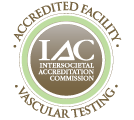Endovenous Ablation
Endovenous ablation, also referred to as endovenous thermal ablation, is a minimally invasive treatment for varicose veins. It utilizes high-frequency radio waves to generate localized, intensive heat inside the problem vein. The heat is targeted through a catheter. It closes off varicose veins, but leaves them where they are to minimize bleeding and bruising. Most patients prefer endovenous ablation to other treatments because there is minimal pain and recovery.
Preparing for Your Procedure
Your venous expert will do a few tests before the procedure to ensure you are in good health to complete it. Some medications may need to be avoided for several days or weeks before the procedure. In most cases, there is little preparation required for your appointment, but if there is, your vein expert will provide you with instructions that must be followed.
What to Expect During the Procedure
Only a local anesthetic is used during the procedure – so you will be awake. In some severe cases, you may need general anesthesia or a sedative. The specialist will then use an ultrasound to locate the veins so that the catheter can be inserted into them. Most times this insertion is done just below the knee. A solution of salt and anesthetic is then injected into the vein that will be treated. Then, the ablation will be performed.
Immediately following the procedure, your surgeon will apply a bandage and possibly a compression stocking. Most endovenous procedures last two to three hours, but they are done as an outpatient procedure – so you will be able to go home the same day.
What to Expect After
After a few hours, you will be able to go home. Total recovery time averages from one to two weeks, so you will need to take it easy from activities, including work. Bruising and slight swelling could occur in the treated areas. If you have pain, it should be mild and an over-the-counter pain reliever will relieve that pain. In some cases, your legs may appear better immediately after, but for other patients it could take a few weeks for the varicose veins to dissipate.
Aftercare Instructions
You will be given specific aftercare instructions by your specialist, but some common care tips will include:
- Wearing your bandages and any compression stockings as prescribed
- Taking time to elevate your legs throughout the day to promote blood flow
- Taking a walk (mild walk) each day
- Avoiding heavy lifting, intense activity or even high-impact exercise for a minimum of seven days and up to 14 days
- Start to return to normal activities as soon as you can and avoid long periods of sitting or resting
- Do not enter hot tubs, saunas or other hot environments until instructed by your physician
- Do not fly or travel until cleared by your physician
Understanding the Risks and Complications
It is unlikely you will suffer from any severe complications, but there are some risks that you could face, including:
- Infection. Because the skin’s surface is penetrated, you may need antibiotics to fight any infections.
- Damage to the blood vessels. Because a catheter is inserted inside the vein, you could suffer from damage to the vessel, including bruising or bleeding.
- Post-operative bruising or severe tenderness. This usually dissipates after the first couple of days and may be relieved just by wearing compression stockings.
- Thermal heat damage. This is a very rare risk after endovenous ablation and often resolves itself in a few days following the procedure.
- Inflammation of the vein, also referred to as thrombophlebitis. You will notice redness over the treated area, but NSAIDs or non-steroidal anti-inflammatory drugs can help reduce this.
Contact Your Vascular Expert Right Away If…
- You have increasing pain in the treated area
- Persistent bleeding or oozing from the treatment site
- Swelling
- High fever (over 100.4 degrees Fahrenheit)
- Chest pain
- Shortness of breath
- Numbness in the feet or other extremities



